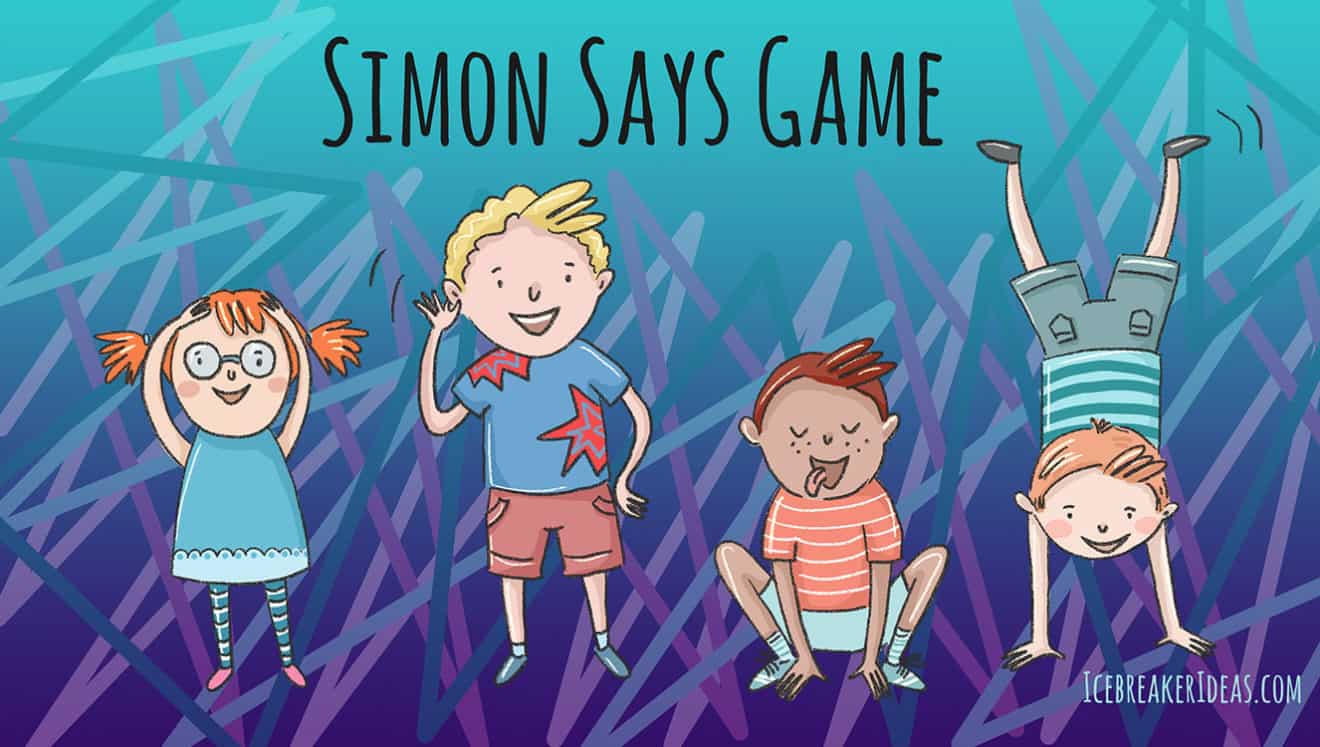We all love the classic game Simon Says! The root of lots of many laughs and fun times we shared with childhood friends and family, Simon Says is a party game classic that’s great for audiences of all ages. But while we all love the original Simon Says game format, there are ways that we can spice it up to make it eve n more interesting and challenging.
Table of Contents
If you were hoping to play Simon Says with friends or family, and you were looking for new ways to improve the experience, then look no further. This comprehensive guide on Simon Says should give you great ideas that you can apply to make your occasion even more memorable for your guests.
Challenging Simon Says Commands
Are you preparing a game for older players? Then it pays to gear up with commands that are designed for more advanced participants. Because the Simon Says format is something we’re all familiar with, it’s easy to underestimate the kind of challenge the game can provide. But of course, there are ways to make it challenging even for the most experienced players. Try these hacks if you want to incorporate some challenging Simon Says commands in your game.
- Add an aspect of sequence – The beauty of Simon Says is that there is no rule as to how many sub-commands there can be in a single command. For example, you can cluster together a sequence of actions to make it harder for your players to complete the whole command. The way you phrase your commands can also be a way to make it even more confusing for your players, helping create an even more engaging experience. Try these examples:
Say hello, after you touch your head, before hopping three times on one leg.
Clap three times once you’re done flapping your arms like a chicken
Write your name in the air using your butt, but make sure you add a wiggle between each letter
Hold your breath for 10 seconds as you spin counterclockwise, after counting from one to 10 backwards
Really, the sky’s the limit when it comes to this fun Simon Says hack. Combine both physical and verbal actions to make it even more cerebral for your players. It’s okay if they take their time to figure out what you want them to do, as long as they’re able to complete the sequence in the order you commanded. - Position Your Players – Here’s another simple way to make Simon Says more complicated for your players. Positioning them in such a way that lets them see each other can shift the focus from paying attention to whether or not you said ‘Simon Says’, and towards how each one of them attempts to execute your commands.
For instance, positioning two players face to face will force them to pay attention to how the other person understood your commands. This way, there’s the added challenge of decoding your commands versus either ignoring or following what the other person is doing. If they get confused and end up taking cues from the player in front of them, then there’s a 50-50 chance they could get it totally wrong! - Simon Moves Too! – Another fun way to make it even more confusing for your players is if you join in on the actions! Every time you give a command, stand up in front of your players and perform an action that’s completely different from the command you gave!
For instance, if you tell them to touch their head and then you touch your hips instead, the confusing visual will make it difficult for them to focus on what you say instead of what you do.
To make it even harder, some game masters will perform the commands exactly as they should be executed for the first two to three times at the beginning of the game. This will condition your players to think that they can mute out what you say and just follow what you do because you always perform the correct action with each command.
Then, once you feel they’re completely comfortable following your actions, throw them off by doing something different from your command on the next turn. - Use Directional Terms – Left and right can be extra confusing when you’re watching someone else try to execute a command. If you want to make an even more hilarious experience, try tossing in a few directional terms with your commands.
For instance, instead of giving your players a generic command for them to touch their elbow, you can indicate whether they need to touch their left or right. If you stand in front of them while you make the distinction, it can be even more confusing since your left side would be on the opposite of their left.
Other Ways to Play Simon Says
There are a bunch of other variations you can try if you’re trying to switch up the Simon Says format. This can be especially important if you’re working with older groups that have more members. Of course, for teens and adults, the typical Simon Says format can be complete child’s play. But these tweaked Simon Says dynamics can make it a fresh new game with brand new challenges.
Simon Says, Sandra Says, Saul Says
Whoever said that Simon was the only one worth listening to? In this brand new remix of a beloved children’s game classic, the challenge is heightened as two new commanders join in on the mix. For this game format, you can choose to take on all three personas, or you can employ two other people to help you give out the commands.
When a phrase or command is preceded by Simon says, the players should do exactly as the game master specifies. However, if the command is preceded by Sandra says, the players must do the exact opposite of what was said. And finally, if the command was preceded by Saul says, then players should perform an action that you assigned before you started the game.
Here’s how to play this complex Simon Says variation:
- At the beginning of the game, instruct your players that there will be three names they need to listen for.
- If they hear you say the name Simon, that means they need to do exactly as you commanded.
- If they hear you use the name Sandra, that means they need to do the opposite of the given command.
- If they hear the name Saul, that means they need to perform the action you designate. So whatever command you give after saying Saul says, they have to do the action you’ve instructed.
- For instance, if you tell them that commands preceded by Saul says can only be responded to by jumping with both of their hands on their heads, then that’s what they will do each time Saul is played, regardless of the command.
- In the same way, any command that isn’t preceded by any of these names should not be performed.
Simon’s Chairs
Simon’s Chairs combines two beloved childhood games, making it the perfect challenge for older kids and teens. This favorite can be especially fun if you’ve got a lot of players, because of the added aspect of making it to the chairs in time to secure a seat once Simon Says it’s time to.
Here’s how to play:
- Position a number of seats in a circle, each chair facing outward, like in a game of musical chairs. Make sure the chairs are not enough by subtracting one or two chairs from the number of players.
- Then make your players stand around the chairs in a circle as well.
- While they’re standing give them your instructions.
- They will be playing a classic game of Simon Says, following commands when you say Simon Says, and standing still when you don’t.
- You can make them do whatever fits, asking them to execute a bunch of random commands throughout the duration of the game.
- When you say, Simon says sit down! all players need to rush to the seats at the center of the set-up and secure a seat by sitting down.
- Players who are not able to get a seat once commanded will be out of the game.
- Similarly, players who rush to the seats when you don’t say Simon says will also be disqualified.
- Continue providing Simon says commands between asking them to sit down to help bring their guard down and make it more difficult to anticipate when it’s time to have a seat.
- Try changing the way you phrase your command to make it more challenging for your players. For instance, saying ‘take a breather’ or ‘take a load off’ instead of sit down can add a touch of confusion and challenge.
Simon Says Drinking Game
Now if you were looking for a fun way to enjoy a game of Simon says without it having to be too G-rated, then the Simon Says drinking game can be a perfect choice. This game combines our ever favorite Simon says game format, and adds the fun and excitement of booze. So if you want to watch a bunch of your drunk friends fumble and stumble as they try to drunkenly execute your commands, then this game is definitely worth a try.
Here’s how you can play:
- The Simon Says drinking game is best played when you’ve all had your fair share of drinks. The tipsier you all are, the better!
- The game master or Simon will provide the commands. The game format is similar to the original Simon Says game we all know and love.
- Use confusing commands like those explained earlier in this guide.
- Every time players make a mistake, they must take a drink.
- The game can go on for as long as the players aren’t completely wasted!
- Careful with this one though, it can get really hilarious and it may be hard to stop getting your friends try to execute commands with their dampened motor skills.
Tips for Playing Simon Says with Different Age Groups
Certain studies have found that it can actually be really challenging for smaller kids, so it pays to understand the different age groups that you’re working with when it comes to games like Simon Says. Consider these tips before you prepare a game to make sure that your audience will fully appreciate the playing experience you’ve laid out for them.
- For Pre-Schoolers Aged 3 to 5
Avoid complicated verbs that they might not understand. If you want, you can use the game as an opportunity to teach kids new action words.
Start a slower pace to help the kids fully understand the mechanics of the game.
Try not to be too harsh when a child fails to follow an instruction or command.
Give them time to execute the command. - For Elementary School Kids
Feel free to provide more complicated, complex commands
Sequencing actions can be a great way to test their comprehension and motor skills
Gradually increase the pace of the game to make it more challenging and to come to a final winner - For Teens and Adults
Go for the most complicated commands you can think of! The more confusing and complex, the better.
You can impose a penalty on players who fail to execute the command to heighten the stakes of the game.
Serve your commands as fast as possible to make it harder for all players to keep up.
Try out different tricks like executing the commands yourself, or positioning your players to face each other to make it harder to follow through your commands.
Final Thoughts
Sure, we probably used to think the Simon Says game has been a tired and abused game format, but there are a load of fun ways to make it exciting all over again! Reinvent this classic with some of our suggestions, and make it a brand new experience once again for your family and friends.
Susan majored in English with a double minor in Humanities and Business at Arizona State University and earned a Master’s degree in Educational Administration from Liberty University. She taught grades four through twelve in both public and private schools. Subjects included English, U.S. and world history and geography, math, earth and physical science, Bible, information technologies, and creative writing.
Susan has been freelance writing for over ten years, during which time she has written and edited books, newspaper articles, biographies, book reviews, guidelines, neighborhood descriptions for realtors, Power Point presentations, resumes, and numerous other projects.



